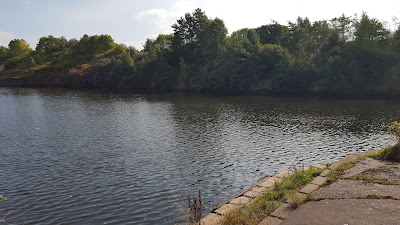I saw all the people behind their masks—smiling, phlegmatic—composed faces—I saw through them and there was suffering -- Edvard Munch
Back in September, I'd read a magazine article on the plane about an upcoming special exhibition comparing and contrasting the artists Vincent van Gogh (1853-1890) and Edvard Munch (1863-1944). The exhibition was a collaboration between the Munch Museum in Oslo and the Van Gogh museum in Amsterdam. It had started in Oslo from May to September, and then it moved to Amsterdam at the end of September. I had seen an exhibition of Munch at the MOMA in New York a few years ago, and I'd visited the Van Gogh museum when I was in Amsterdam back in 2011. However, this exhibit was a unique and rare opportunity to see some of the iconic masterpieces of both artists side by side, and I knew as soon as I read the article that I would have to plan a weekend in Amsterdam to visit it. Besides, I love Amsterdam, and any excuse to visit the city is a good one.
I'm not an educated art historian or critic, but for a 'layman' who loves art, the Munch:Van Gogh exhibit was educational, interesting, powerful and emotional. I always enjoy getting guided tours or multimedia audio guides when visiting art museums, because I find they help me to appreciate the art better. The multimedia guide for this exhibit was absolutely essential for understanding, and it did a fantastic job. Over multiple floors, they showed the artists developing as contemporaries in the 1880s, and then they showed some of Munch's later years, where you could see how he continued to develop and grow as a artist long after Van Gogh's sad suicide.
One wall I particularly loved had Monet, Van Gogh, Munch and Pissarro in a row of four paintings. Monet and Pissarro were shown on the far outer left and right, and then you could see Van Gogh and Munch experimenting with Monet's and Pissarro's techniques on the inner two paintings. Another wall showed Gauguin's stylistic influence evident in both Van Gogh's and Munch's work.
The wall that packed the most visceral punch for me was Munch's Starry Night, 1922 next to Van Gogh's Starry Night over the Rhône, 1888.
Nothing replaces seeing a painting in person and up close. You cannot appreciate brush strokes, texturing, thickness or paint drips from a photograph. Nothing compares to seeing the individual strokes of vibrant color that combine to create Van Gogh's eyebrows and beard in his self protrait with a straw hat, to seeing the scrawl of his simple signature, "Vincent", or to noticing deliberate surface texturing, scarring and paint runs in Munch's work.
I remember when I saw the exhibit dedicated exclusively to Munch at the MOMA, I left feeling bruised and depressed. Munch's art is beautiful and incredible, but it is also full of existential despair, and that emotion only became more pronounced in his later years and works. I saw some masterpieces I had seen before, and I saw some new pieces as well, and the feelings were still the same. Awe at his talent and angst at his later themes. Munch's art reminds me of a poem I read long ago in university by the Nicaraguan poet Rubén Darío that affected me deeply and has stayed in my mind ever since. This poem was written around the same time that Munch painted The Scream.
Nocturno
Quiero expresar mi angustia en versos que abolida
dirán mi juventud de rosas y de ensueños,
y la desfloración amarga de mi vida
por un vasto dolor y cuidados pequeños.
[...]
El ánfora funesta del divino veneno
que ha de hacer por la vida la tortura interior,
la conciencia espantable de nuestro humano cieno
y el horror de sentirse pasajero, el horror
de ir a tientas, en intermitentes espantos,
hacia lo inevitable desconocido y la
pesadilla brutal de este dormir de llantos
¡de la cual no hay más que Ella que nos despertará!
 |
| The Scream, Edvard Munch |
In contrast, Van Gogh's work is generally much more hopeful and uplifting. He saw beauty, dignity and solace in the world and in people, and you can see that in his paintings. Although if he had lived longer, who knows? Maybe the emotions of his paintings would have changed and become darker and more depressed, too.
After finishing the special exhibition, we did the quick highlights tour of the rest of the Van Gogh museum, mostly because you cannot be in the museum and not take the opportunity to see (or re-visit) as many of his masterpieces as you can. The new thing I learned that surprised me the most was that Vincent could not paint when he was severely unwell with his mental illness. When he was in the depths of his illness and confusion, he did not paint. It was only when he was feeling better that he could paint. People tend to think that his mental illness drove his genius, but that's not true. His art flourished *in spite of* his illness. When you think of the beauty that he was able to paint in the context of his internal suffering, it's astonishing.
 |
| Almond Blossom, 1890, Vincent van Gogh |
The Munch:Van Gogh exhibit is on at the Van Gogh museum in Amsterdam until 17 January 2016. If anyone has the opportunity to see it, you should definitely GO.















































